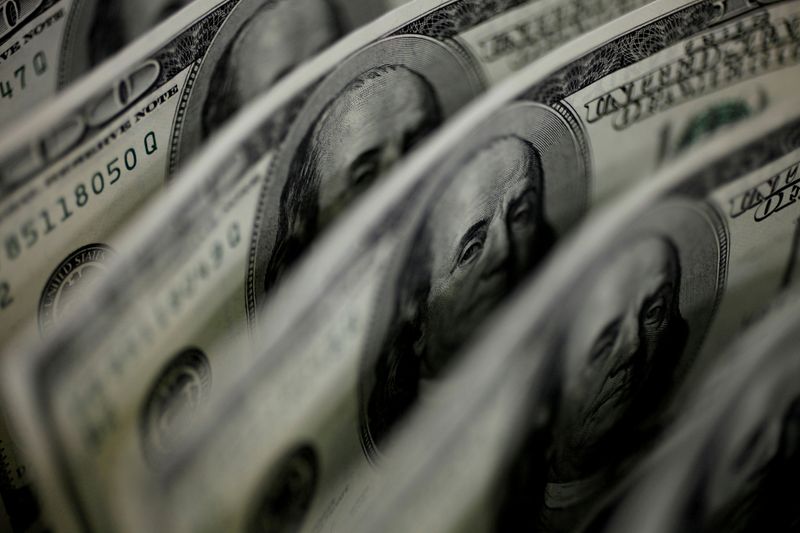LONDON (Reuters) – The dollar erased all losses sustained after last week’s poor U.S. jobs report and extended broad gains on Monday as concerns about slowing global growth boosted its safe-haven appeal in holiday-calmed trade.
While the weak jobs report doused expectations the U.S. Federal Reserve might strike a hawkish note at a meeting later this month, analysts said the data is yet another reminder of global growth losing steam after a bounce earlier this year, a significant headwind for cyclical currencies such as the euro and the Aussie dollar.
The dollar index, which measures the currency against six rivals, edged 0.2% higher to 92.25. It had dipped to 91.941 for the first time since Aug. 4 on Friday, when a closely watched U.S. labour report showed the world’s largest economy created the fewest jobs in seven months in August.
Though currencies stuck to recent well-worn trading ranges, the underlying sentiment turned in favour of the dollar in London trading as fears rose the global economy is set for a rough patch. U.S. markets are shut for a holiday.
Economic surprise indexes from the United States to China have slipped sharply in recent weeks while latest manufacturing surveys from Britain to Japan show the rise in coronavirus delta cases is sapping sentiment.
“The key to the narrative in the next few weeks will be how sharply the growth data can snap back globally, if at all, how the Delta variant cases evolve as pupils return to school, and from a momentum perspective do we continue to see real money begin to put money back to work,” said a trader at a U.S. bank.
The weak jobs report did not spark a new wave of dollar selling on Monday as the greenback spent the Asian and European session pushing higher against its rivals, prompting some major currencies including the euro and the Australian dollar to move back to pre-Friday jobs report levels.
Benchmark 10-year U.S. Treasury yields firming to more than one-week highs also boosted the dollar. U.S. markets were shut for a holiday, contributing to lower volumes.
HEDGE FUNDS BULLISH
While analysts remain bearish on the outlook for the greenback with Citibank strategists expecting it to weaken in the coming months as the Fed postpones tapering plans to November, hedge funds have quietly ramped up bullish bets.
Latest data showed they have increased bets on the greenback versus the euro for a second consecutive week, boosting net bets to their highest since March 2020.
Kenneth Broux, an FX strategist at Societe Generale, ascribed the dollar’s rise to profit-taking on the euro and other currencies before central bank policy meetings this week.
Most of the dollar’s gains was focused on the Australian dollar, which weakened 0.2% to $0.7436 ahead of a central bank decision on Tuesday where analysts remain divided on whether the Reserve Bank of Australia will call time on its stimulus plans.
National Australia Bank predicts the central bank will reduce asset purchases again, “although the optics of tapering amid protracted lockdowns means it is likely to be a close decision,” NAB analyst Tapas Strickland wrote in a report.
The euro also failed to extend its gains on Monday after rising above the $1.19 level for the first time since the end of July. It was trading 0.1% weaker at $1.1866 before a European Central Bank policy decision on Thursday.
Economists reckon it is still too early for the ECB to call time on emergency stimulus, but it could agree to slow the pace of its bond buys after euro area inflation surged to a 10-year high at 3% last week.
In cryptocurrencies, bitcoin was about flat at $51,862, after earlier touching $51,601, a level not seen since May 12. Smaller rival ether traded little changed at $3,932.77 after topping $4,000 last week for the first time since mid-May.
(Reporting by Saikat Chatterjee; Editing by Alexander Smith, Andrew Cawthorne and Marguerita Choy)

























